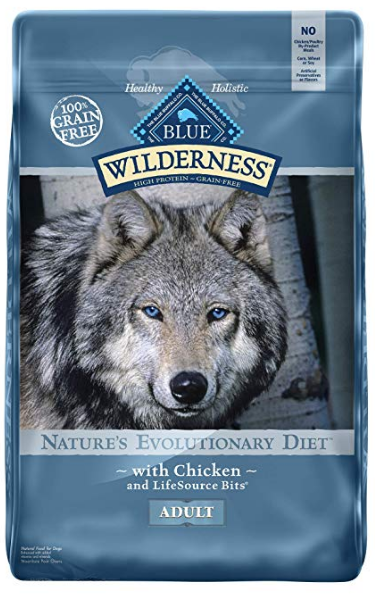What is the Best Dog Food for English Setters?
To some people, English Setters are some of the most beautiful dogs in the world. And for good reason, they’re so distinct in their look with their long hair, spots, but also their sharp figure. But they’re not just looks. They’re smart, sharp, strong-willed dogs that make keen hunters. Because of this, they are paired best with a strict diet. So what is the best food for English Settlers? Let’s get into it!
A Few Recommendations for Dog Food for This Breed!
Food | Quality | Our Rating |
|---|---|---|
A | ||
A | ||
B+ | ||
A- |
**There's more info below, but you can also click the links above to see current prices or read customer reviews on Chewy.
How Many Calories Should You Feed an English Setter?
**Please note: these estimates are based on an average weight for this breed. Every dog is different. Please talk to your vet before making changes to your dog's diet.
The size between male English Settlers and females can be a bit different, but not much different. Therefore their caloric intake can be matched by the size of each. Also, they are traditionally active dogs, but they also come with different temperaments just like any other breed. They grow to be between 40-80 pounds with male dogs traditionally being a little larger.
English setters are larger, active dogs, so they require more caloric intake. For starters, for your lower energy dog, the caloric intake per day will be 1141 k/cal per day. For the moderately active dog, the caloric intake per day should be around 1394 k/cal per day, and for the highly active English setter, the caloric intake per day should be around 2218 k/cal per day.
These numbers are based on a full grown 65 pound English Setter, they should be adjusted based on your dog’s size. And you should always pay close attention to your dog’s activity level because English Setters are prone to weight gain if they overeat and under exercise.
20% of at chewy.com
On ALL Dogfood
Macronutrient Information About This Breed
Since this dog is such an active dog, and it comes with good size, it needs a specific type of nutrients to stay energized and healthy. For starters, the dog will need a strong presence of protein in his diet. This helps the dog build strong muscles, joints, etc. which will help with hip dysplasia (more on that later).
Also, the English Setter needs plenty of carbohydrates to give it the energy and something to burn while they’re being so active throughout the day. It’s also recommended to keep this breed’s diet as close to the original, natural diet as possible.
Meaning, the English Setter developed in areas of Europe that developed wheat, rice, poultry, etc. We would recommend having a good base of poultry in the meal; also lamb is a great choice. Additionally, we’d recommend brown rice and a good mix of vegetables. It’s usually best to stay away from wheat and corn because those are usually just filler and don’t add much nutritional value for the dog.
Also, the English Setter requires a good amount of anachidonic acid. However, as long as the dog is fed food with lots of polyunsaturated fatty acids then it will produce the acid naturally. But how do you know if your dog is receiving enough of this acid? The English setter has a magnificent coat, the glossier the coat, the closer you are to the optimal amount of anachidonic acid. Good sources of this acid is in things like safflower oil, bad sources are beef fat or soy oils.
How a GOod Diet Can Help prevert Health Problems Common in English Setters
English Setters suffer from a few main issues. First, they have problems with hip dysplasia. This common through a lot of breeds and is no exception with English Setters. To help with this, make sure your dog is receiving a good amount of glucosamine. This will help with joint health. Also, managing your dog’s weight will help alleviate pressure put on your dog’s hips and thighs.
English Setters also suffer from congenial deafness. Unfortunately, if the dog is born with deafness, it is irreversible at the moment. But that does not mean the dog cannot still have a good quality of life. However, this condition only appears in about 10% of the dogs.
Also, English Setters are known to have skin irritation issues. A lot of the time this can be attributed to allergies from poor nutrition or fillers in the dog food. It could also be an allergy to pollen or other outdoor factors. A good place to start is changing your dog’s food if they are eating food with fillers in it. If that doesn’t work then you might want to consult with a vet about allergy medicine.
Additional health problems could include: autoimmune hypothyroiditis, canine hypothyroidism, elbow dysplasia, also, some members of the breed have been known to contract cancer. Regardless of all of these, keeping your English Setter on a healthy diet and at a healthy weight is one of the best preventative measures.
Feeding Your English Setter Puppy
Puppies need to eat a lot during the first six months. This is especially true for English Setters because they are a very active breed. It’s best to divide his caloric intake into 3-4 meals a day. When your dog reaches 10 pounds, shortly after it is weaned off of his mother’s milk, his caloric intake should be about 280 k/cal per day divided into 3 or 4 meals.
Once it reaches 20 pounds, the puppy should be eating about 470 k/cal split up between 3-4 meals a day. At 30 pounds it should be eating about 640 k/cal per day split between 3-4 meals. At 40 pounds, the puppy should be fairly close to adult weight. But the caloric intake per day should still only be about 790 k/cal per day, not quite the caloric intake as a full grown English Setter.
Once the English Setter reaches full growth, you can cut down the number of meals that he eats per day. People usually opt for two meals per day, but you can give him one big meal as well if that suits both your and his lifestyle. Be sure to refer to the calorie section above to make sure you are feeding your full grown English Setter the correct amount of calories per day.
Editor’s Choice for the Best Dog Food for English Setters
The Blue Buffalo Wilderness Chicken Recipe is an excellent choice for the English Setter specifically. It has high amounts of protein to aid in building strong muscles and joints to accompany their athletic build and active personality.
It also has a ton of carbohydrates to give the English Setter plenty of energy to play, hunt, or run all day long. However, it’s also low in fat.
This will help keep the extra weight off the breed so they can keep a lean build and prevent hip and elbow dysplasia. It’s also gluten free, no GMOs, and no filler.
This particular bag is venison, which is a good mix between ultra lean meat and fatty meat. This is an all-around great food choice for your English Setter. Let’s talk about some pros and cons.
- All the ingredients are sourced in the United States.
- Good for dogs with allergies.
- Some dogs do not seem to like the taste as well as other brands.
Honestly, there are tons of great products you can get for your English Setter. There is no one right choice. This is one that we think would be perfect for your English Setter, and we included a few more up top. Give them a try, but ultimately find what works best for your dog!
Image credit: Amazon.com
**Disclaimer: Our dog food reviews are based mostly on (1) our expertise and that of the experts with whom we consult and (2) the information provided by the manufacturers. We do test many dog foods (with our dog's help), but we can't test them all. As such, please remember the above recommendations are our opinions, and you should consult your vet before making changes to your dog's diet.


